

Road-transportable modular pontoons
Diving and ROV operations requiring surface-supplied or saturation
diving systems and work-class ROVs, along with tools such as cranes,
excavators, and pipe or cable laying systems (see photos below), as
well as other heavy equipment, need surface support offering ample
space. These operations sometimes occur in areas like rivers, natural
lakes, artificial lakes with dams, congested port sections, or island
lagoons isolated from the open sea by very shallow reefs, which are
inaccessible to typical diving support vessels and barges used at sea.
In such cases, road-transportable modular pontoons, which consist of
floating platform sections designed for easy transport on standard
trucks and assembly on-site into large floating structures, can provide
an ideal solution.

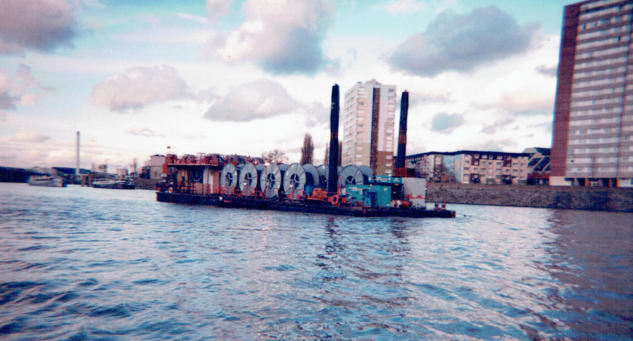
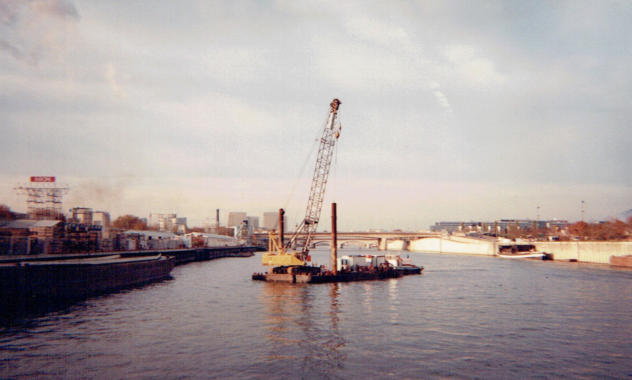
It must also be considered that such pontoons can be used to create
temporary jetties when operating in rivers or lakes with banks too
shallow to allow small boats to approach, forcing personnel to jump into
the water to embark and disembark, and preventing the transfer of
large equipment.
Regarding the historical origin of these technologies, it is worth noting
that while the use of floating bridges dates back to antiquity, and
perhaps earlier, the concept of using modular floating jetties to create
entire port facilities dates back to World War II, when the British
engineered and deployed temporary, portable harbors known as
"Mulberry Harbours" for the D-Day landings on the Normandy coast
(France) in June 1944 (see the picture below).
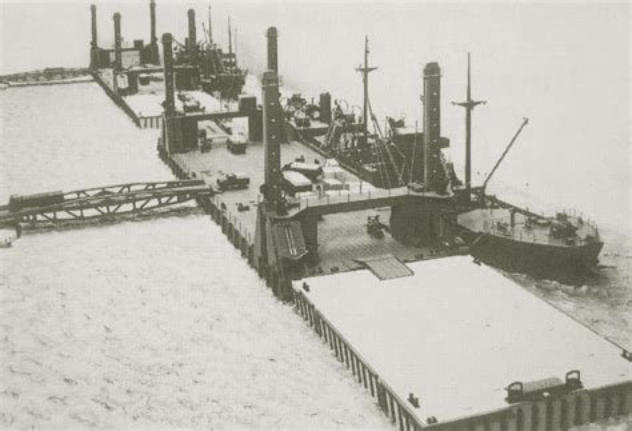
Current road-transportable modular pontoons, convenient for
organizing diving and ROV operations in the aforementioned areas, can
be made of steel and high-density polyethylene (plastic). Note that
while anodized aluminum is still used in the construction of floats for
some marina pontoons and small barges, it appears that this material
is no longer employed in the design of road-transportable modular
pontoons, except for frames supporting additional floors.
Modular steel pontoons are typically composed of rectangular modules
that are often compartmentalized into several sections. These
compartments are frequently left empty, which allows for regular
verification of their integrity. In some cases, they may be filled with
closed-cell foam to reduce the risk of flooding in case of punctures or
leaks. However, this advantage results in the inconvenience that the
integrity of compartments cannot be visually checked from inside. The
decision to leave compartments empty or fill them with foam depends
on several factors, including the manufacturer's design, the intended
use of the pontoon, and specific client requirements.
These pontoons are provided with clamping systems allowing them to
be assembled in various configurations to create large surface
supports. These configurations can be customized to surround
structures or be simple shapes like squares or rectangles.
These clamping systems are usually specific to each manufacturer, so
merging pontoons from two different manufacturers is not ordinarily
possible. We can see these differences in the modules below from
Poseidon Barge (https://www.poseidonbarge.com) and ETC Marine
(https://www.ectmarine.com).
The smaller modules are typically about 4 m (L) × 2 m (W) × 0.7 m
(H), weigh between 1.2 and 2 tonnes, and have a load capacity of up to
10,000 kg/m², depending on the unit.
The larger modules can typically be up to approximately 12 m (L) × 3
m (W) × 1.5 m (H), weigh around 11 tonnes, and have a load capacity
of up to 10,000 kg/m².
Barges designed with such modular pontoons can be anchored in
various water bodies such as lakes, rivers, or ports using anchors or
legs, depending on the operational depth.
They can also be equipped with portable thrusters and dynamic
positioning (DP) systems, allowing self-propulsion and positioning, such
as illustrated below by Thrustmaster (https://www.thrustmaster.net), a
well-known manufacturer of such equipment.
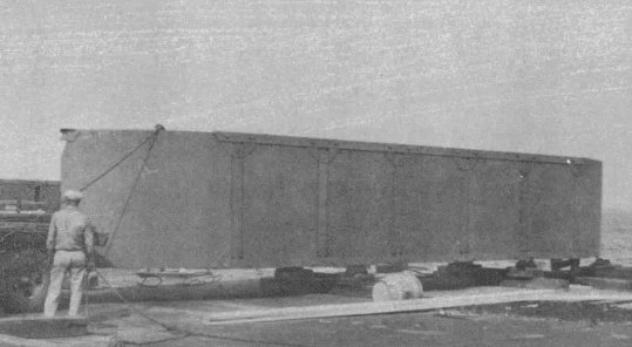
The concept of modular steel pontoon sections, which could be
transported by truck and assembled into barges, ferries, or floating
docks, dates back to at least the World War II era (1940s) and
possibly earlier within military engineering circles. (Click on the photo
below that shows such a unit to open the 1942 installation manual.)
These military-style modular pontoon units were then adapted into
commercial barge platforms for the civil engineering, salvage, and
dredging industries following the 2nd World War. In parallel, the
concept of floating jetties has been widely reused to organize port
facilities for small recreational boats and sometimes large vessels at
more favorable costs than classical piers. However, please note that
even though they can be considered an example of the use of this
technology, the floating jetties used to create “Mulberry Harbours”
could not have been transported by road due to their size. Therefore,
this article focuses only on light units that can be carried by “normal”
trucks, so as not to necessitate the organization of an exceptional
convoy for their transfer, and that can be easily installed using a light
crane. It must be considered that due to their size, exceptional convoys
may not access difficult-to-reach areas.
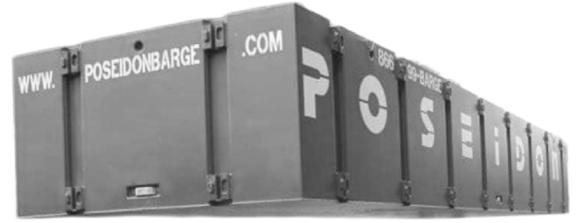
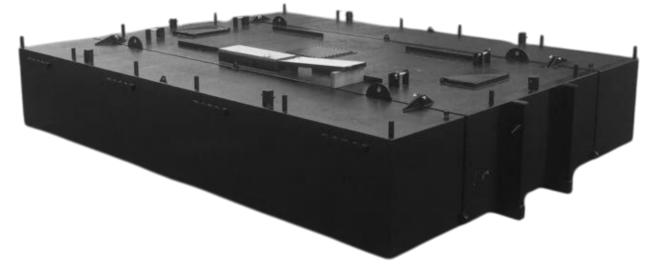
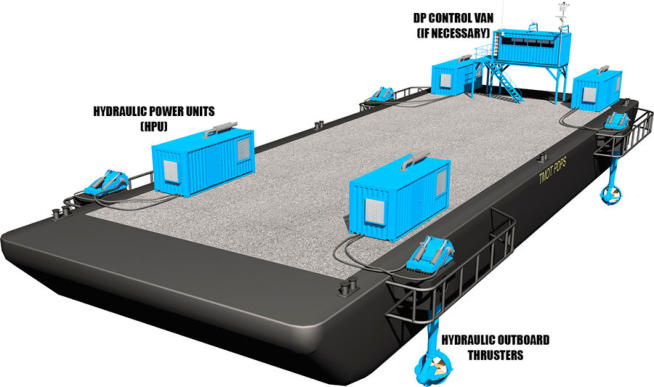
Also, note that some manufacturers claim that barges assembled with
their modular steel pontoon sections can be used in open sea
conditions. Regarding this point, I recall participating in the repair of an
optical fiber cable between Dover (UK) and Calais (France), diving from
such a barge, and completing the operations on time despite several
days of rough weather.
Providing the address of every manufacturer of this type of
equipment would be a very long and nearly impossible task,
considering that small shipyards produce them alongside established
manufacturers. However, the directory below lists some well-known
brands of such equipment designers, whose websites offer
information to better understand their products:
•
Damen:
Damen Shipyards Group - Pontoon Division - P.O. Box 1 - 8260 AA
Kampen, The Netherlands
Website: https://www.damen.com/vessels/pontoons-and-barges/
modular-pontoons
Email: info@damen.com
Phone: +31 (0)38 385 8585
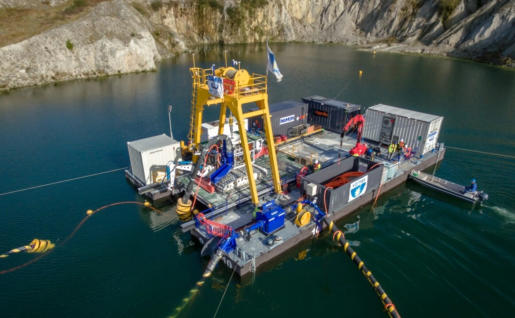
•
ECTMarine:
Unit 4, The Mill Industrial Estate, Mill Road, Fareham, Hampshire
PO16 0TH, United Kingdom
Website: https://www.ectmarine.com
Email: sales@ectmarine.com
Phone: +44 (0)1329 288 121
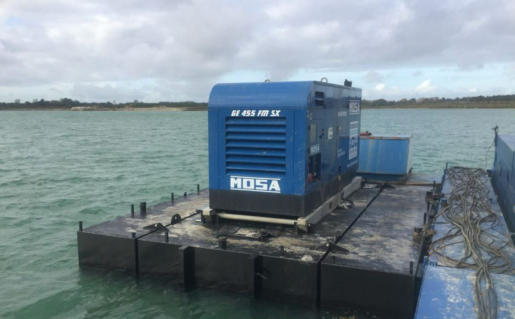
•
Aqua Dock:
Hereford House, Bath Parade, Cheltenham, Gloucestershire, GL53
7HU, United Kingdom
Website: https://www.aqua-dock.co.uk
Email: sales@aqua-dock.co.uk
Phone: +44 (0)1242 216820
•
Flexifloat Systems
PDM Bridge, LLC (Flexifloat) 1000 PDM Way - Point Pleasant, WV
25550, USA
Website: https://www.flexifloat.com
Email: info@flexifloat.com or sales@flexifloat.com
Phone: +1 (304) 675-2361
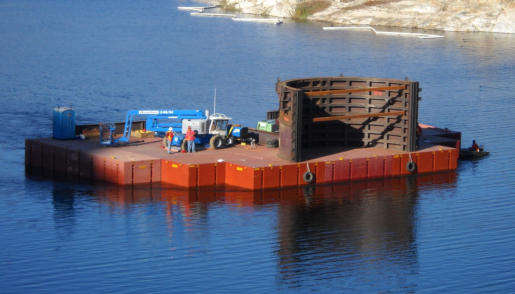
•
Modular Pontoon Systems (MPS B.V.)
Nijverheidsweg 12, 3641 RP Mijdrecht, Netherlands
Website: https://mpsbv.com/
Email: info@mpsbv.com
Phone: +31 (0)418 – 67 80 86
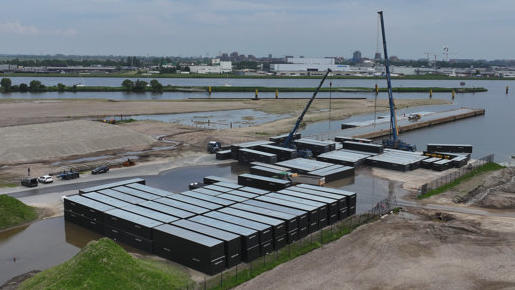
•
Poseidon Barge
5000 Hwy 308 (River Road) Belle Chasse, LA 70037, USA
Website: https://www.poseidonbarge.com
Email: info@poseidonbarge.com
Phone: +1 (504) 656-9800
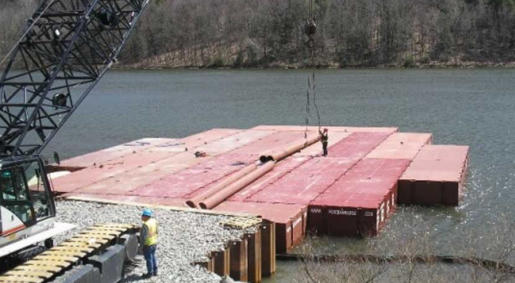
•
Weifang Dragon Machinery Technology
No. 1688, Yuhe Road, Weifang City, Shandong Province, China 261000
Website: https://dragonsolution.en.made-in-china.com/
Email: sales@dragonfloat.com
Phone: +86 536-227 2889
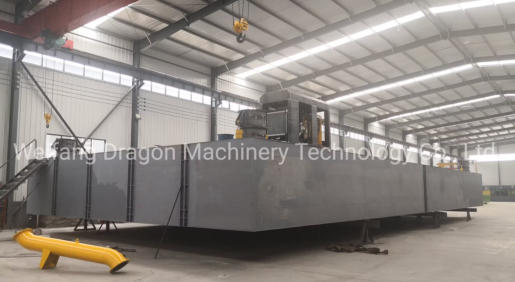
HDPE (High-Density Polyethylene) pontoons with UV stabilizers are
popular due to their resistance to corrosion, ultraviolet rays, and
impacts, providing good durability, low maintenance, and lifespans
exceeding 15 years.
They typically consist of square molded modules, each measuring
about 0.5 m on each side and 0.4 m in height, joined using dedicated
corner connectors or pin-and-nut systems."
Installing them is straightforward and usually requires no specialized
staff or heavy equipment, as the modules (weighing around 7 to 10 kg)
can be hand-carried and transported in small vehicles over rough or
unprepared roads.
They are widely used for floating working platforms and jetties
deployable on natural or unprepared shorelines.
Their load capacity is generally around 350 kg/m², with some
systems designed to support up to 750 kg/m² when configured in
double layers. They are therefore unsuitable for heavy loads, although
many suppliers offer steel or aluminum subframes and flooring to
distribute weight more evenly.
Similar to steel modular pontoons, there are many manufacturers of
HDPE (High-Density Polyethylene) pontoons with UV stabilizers.
However, the market is highly fragmented, with companies frequently
appearing or disappearing, making it impractical to maintain a
complete and current list. Many of these manufacturers focus
exclusively on the marina and leisure market, and although their
products could technically be adapted for mobile work units, their legal
acceptance for such use is uncertain. To avoid recommending
potentially non-compliant products, I have limited my selection to
manufacturers who explicitly describe this application in their product
specifications.
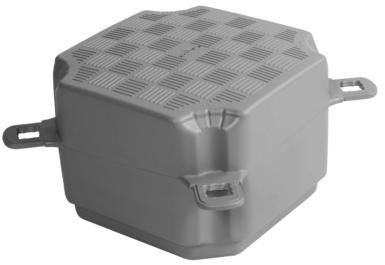
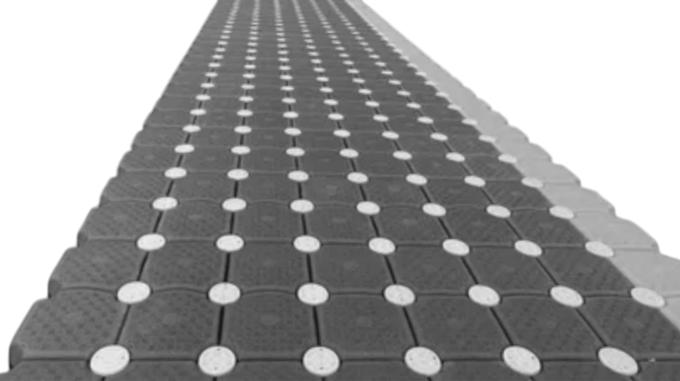
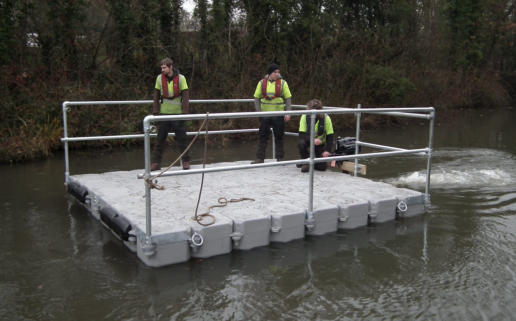
•
National Pontoon Ltd:
Unit 4, Mill Lane Industrial Estate, Wimborne, Dorset BH21 2JW,
United Kingdom
Website: https://www.nationalpontoon.co.uk
Email: sales@nationalpontoon.co.uk
Phone: +44 (0)1202 849400
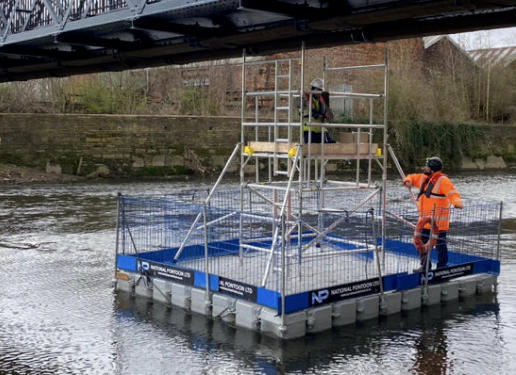
•
Pontoonworks Ltd:
Unit 4, Mill Lane Industrial Estate, Mill Lane, Wimborne, Dorset BH21
2JW, UK
Website: https://www.pontoonworks.co.uk
Email: sales@pontoonworks.co.uk
Phone: +44 (0)1202 849400
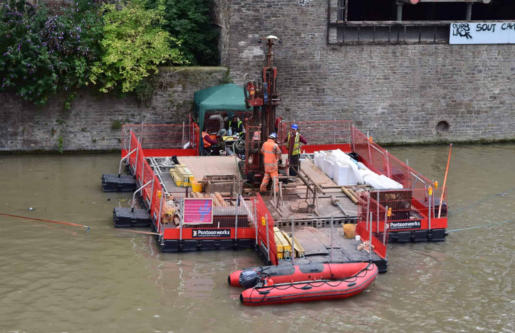
It must be taken into account that a few manufacturers offer large-
dimension high-density polyethylene (HDPE) modules. One example is
Perebo, a company headquartered in Germany that provides units with
the following typical dimensions: 5 m (L) x 2.5 m (W) x 1.2 m (H). These
modules are assembled similarly to steel models and can withstand a
load capacity of up to approximately 400 kg/m². The weight of these
units is not mentioned.
•
Perebo contact:
Industriestraße 1 49439 Steinfeld, Germany
Website: https://www.perebo.com
Email: info@perebo.com
Phone: +49 (0) 5492 980-0
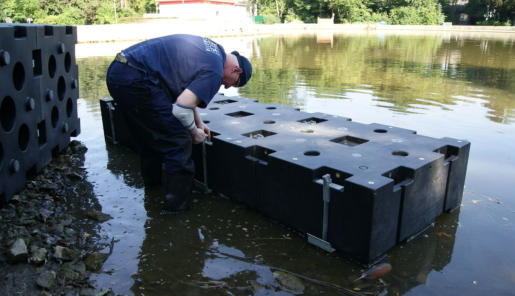
Note that HDPE (High-Density Polyethylene) pontoons are also used as
floating supports for activities such as fish farms and solar farms as
a result of their reasonable costs and ease of transportation,
installation, and maintenance.











